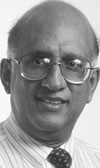
Tipping point in the oil crisis
The depletion of the world's petroleum resources was first forecast in the 1950s by Dr M. King Hubbert. The point of maximum production (known as the Hubbert Peak) coincides with the midpoint of depletion – when half of all resources have been used. It is generally accepted that US oil reserves passed the Hubbert peak in the '70s.
Ignoring the warnings, America and the world continues to gorge itself on oil, turning isolated strips of desert into crudely conspicuous concentrations of egregious opulence. Oilman T. Boone Pickens calls this the largest transfer of wealth in human history – about $700B a year, four times the cost of the Iraqi War.
Those who forecast oil at $100 a barrel were ignored as pessimists, until it happened. Then the speculators got involved, pushing it to almost $150 a barrel. Now it has backed down to about $125, and the pain is 'forgotten' – till it inevitably jumps again. Expect $200-a-barrel or more within the next year, and then sighs of relief when it falls to $180. Will we never learn?
In Europe and most parts of the world, gasoline has been selling at $7-8 a gallon. But it had to top $4 in the US before Americans took notice. Suddenly, the media and the financial markets understood the notion of peak oil.
Here is the geopolitical conundrum that grips the US: we are now borrowing money from China to buy oil from the Middle East to consume in ways that are destroying the planet.
Al Gore made a speech in Washington last week that laid it on the line for American spirit and enterprise. He calls for America to embark upon a moon-shot style programme to switch to clean, cheap, and renewable sources for 100% of the nation's electricity, within 10 years.
Of course, there was the predictable cacophony of nay-sayers – America could not possibly transform itself so quickly. Al Gore points out that America responded to president John F. Kennedy's challenge in 1961 to put a man on the moon in less than a decade.
New workplace paradigms
Traditional manufacturing dates back to the industrial age with the growth of large-scale production in hierarchically structured organisations. Most factories had full-time workers, and most people remained with the same company till they exited with a pension.
This kind of employment has little place in today's workplace. Rising health costs are making company-sponsored long-term health plans unaffordable. Further, long-term pension funds are becoming an unacceptable financial burden.
Today's factories have geographically dispersed knowledge-workers operating round-the-clock. At the end of an individual's workday, activities are transferred to team-members in other parts of the world – US, India, China, Europe – who are working during the daytime in that country.
This use of sequential workers is similar to the shift-style workforce that evolved during the industrial revolution, which had a profound impact on manufacturing. This same concept is relevant for semi-structured work in many professional arenas such as finance, product development, marketing communication and IT.
For what is left of traditional workplaces, walls and square offices should be turned into open environments with common work areas and quiet spaces. The old, prestigious personal spaces should be replaced with team space.
New office tools – computers, PDAs, wireless connectivity – should be readily available for all employees, facilitating effective communications and productivity. Offices should provide quick and easy file transfer and e-mail connectivity, whether the worker is in the office or at a remote location. Follow-me telephone numbers should be assigned to individuals rather than tied to physical locations. The concept of the ‘personal secretary’ anchored to the office location is obsolete.
In the new paradigm, old-style HR departments disappear. New ‘facebook’ style networking should link employees (local as well as international) to develop camaraderie and a close-knit family atmosphere.
Factories and manufacturing work places should, like offices, make strong efforts to be warm, welcoming places; they should look good – small, efficient, clean and happy places to work. Productivity and efficiency will follow.

Jim Pinto is an industry analyst and commentator, writer, technology futurist and angel investor. His popular e-mail newsletter, JimPinto.com eNews, is widely read (with direct circulation of about 7000 and web-readership of two to three times that number). His areas of interest are technology futures, marketing and business strategies for a fast-changing environment, and industrial automation with a slant towards technology trends.

© Technews Publishing (Pty) Ltd | All Rights Reserved